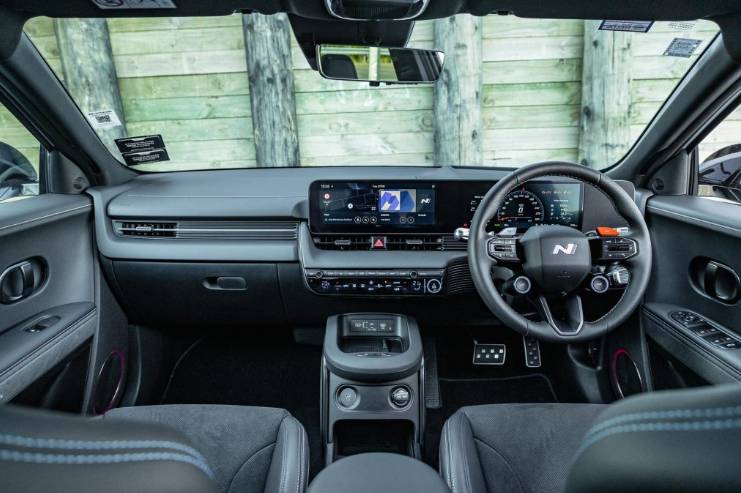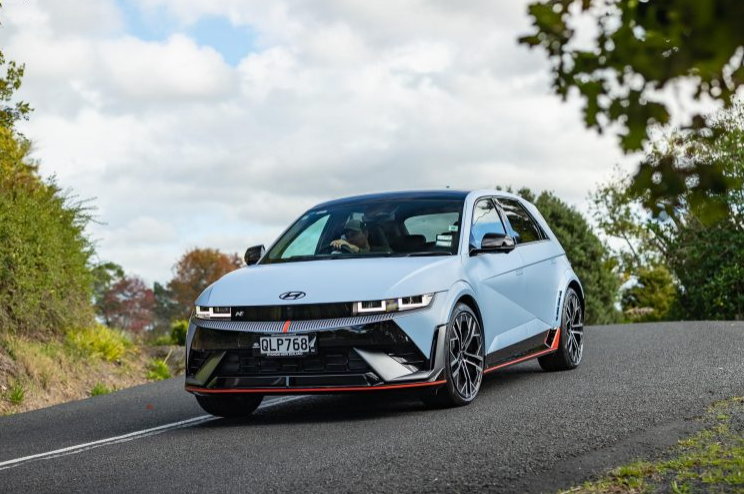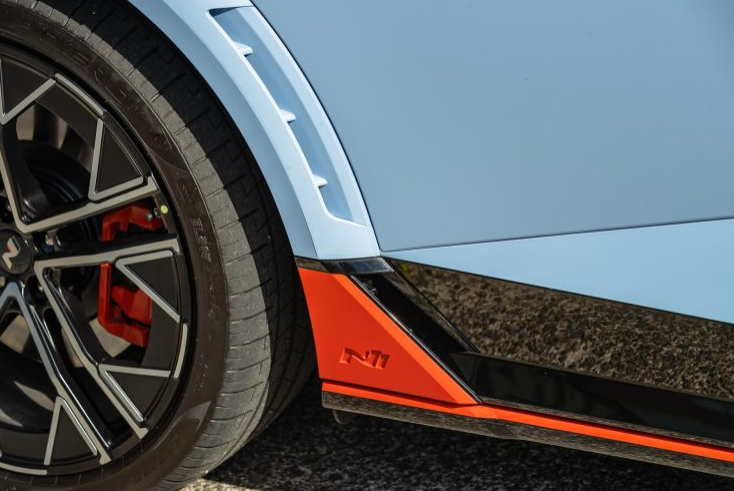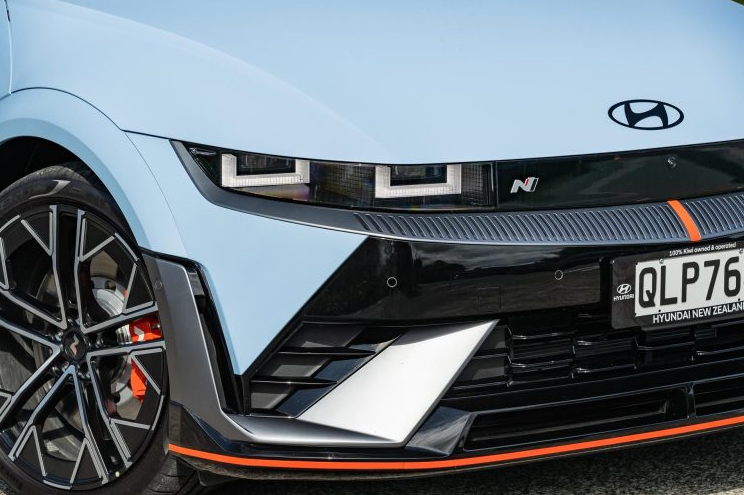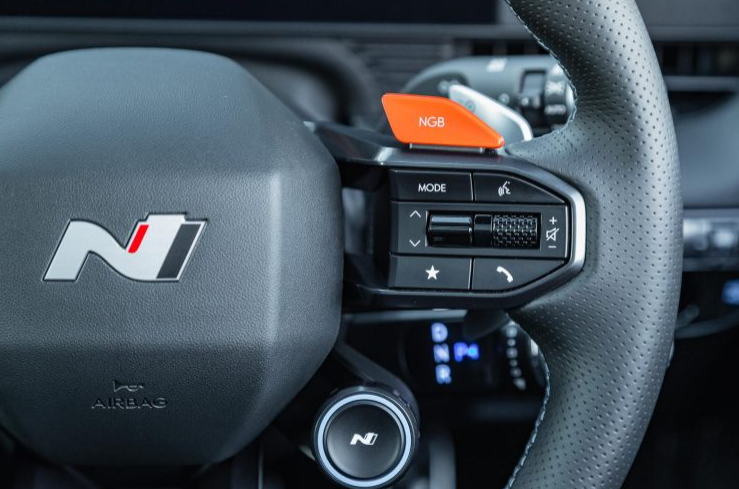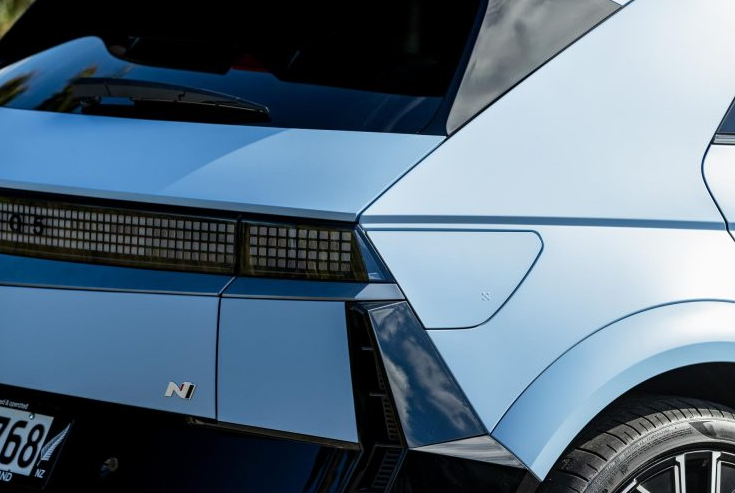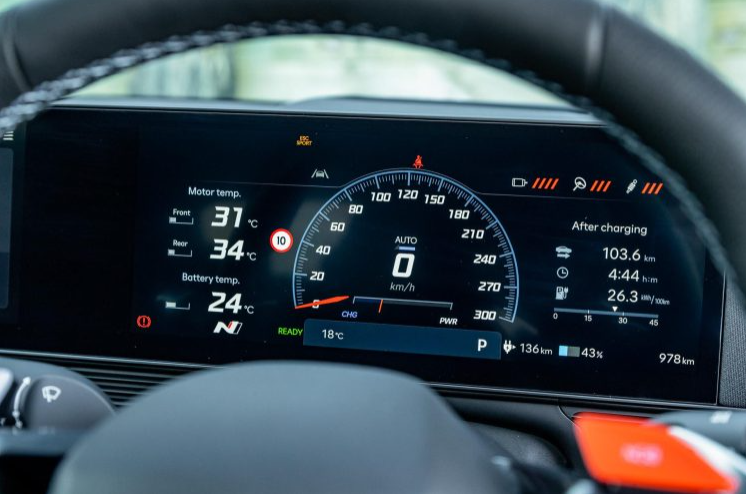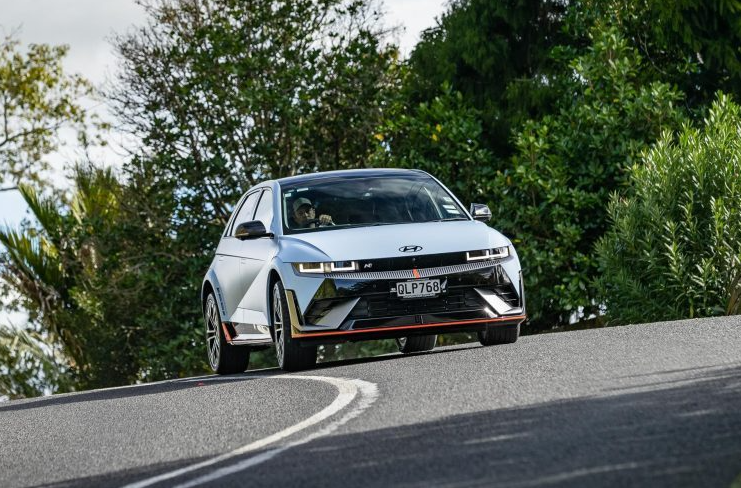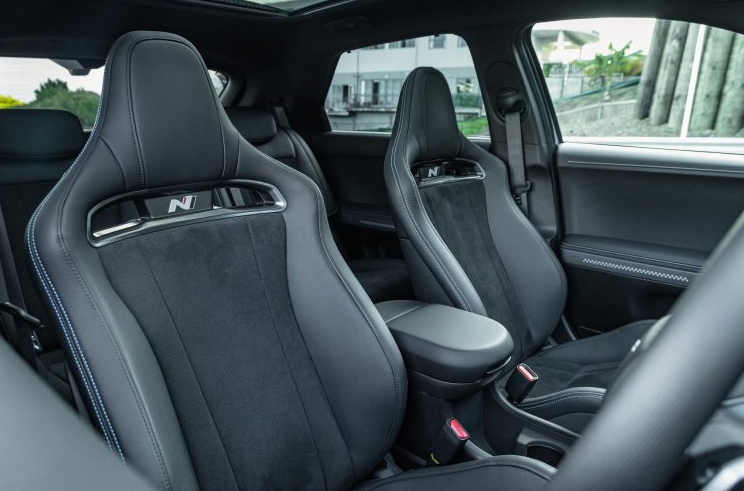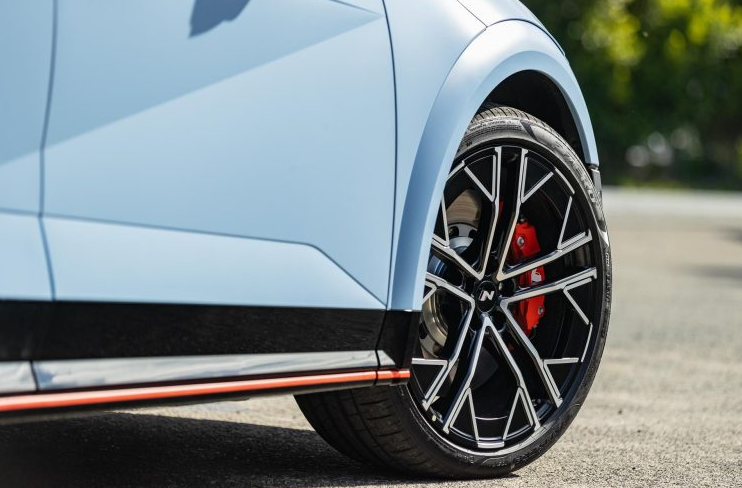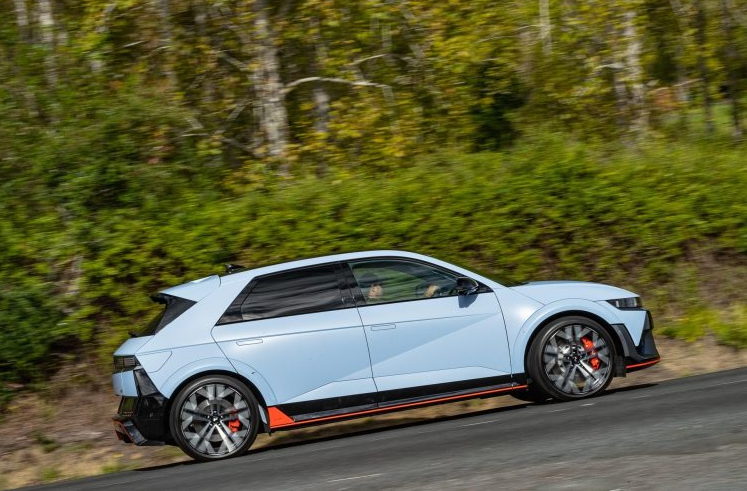2024 Hyundai IONIQ 5 N review
Hyundai has delivered a new EV with its IONIQ 5 N. It’s an Exciting Vehicle, one that happens to be battery powered.

Hyundai’s N division has delivered a new sort of EV with its IONIQ 5 N. It’s an Exciting Vehicle, one that happens to be battery powered.
With the Ioniq 5 N, Hyundai has set out to convince EV haters that an electric car can deliver an immersive, emotional and connected drive.
They say imitation is the sincerest form of flattery and part of the 5 N’s appeal is that it does a darn good rendition of being motivated by an internal combustion engine.
Sounds crazy, and it’s all software-induced trickery but it does work. It goes against what we say makes an electric car good, i.e. that silent, instant pull and ultra-refined delivery, but when you configure this 5 N in a certain way, you can almost forget you’re driving an electric car.
In some ways, Hyundai has managed to deliver the best of both worlds. It can be a quiet, refined and powerful EV in the traditional sense.
And then with a couple of button clicks, it plays the part of a rowdy petrol-engined car with all its foibles that drivers say give them character and an edge over EVs.
Yes, it sounds far-fetched, but have another swig of that shiraz and we’ll try to explain how Hyundai has managed to pull such a swifty.
What makes the 5 an N?
They’ve done a real number on the Hyundai Ioniq 5, in both the hardware and software departments. There’s a stiffer chassis (more spot welds etc), reinforced subframes and beefier drive axles.
The steering column has been strengthened and there’s a tuned electric steering unit with higher ratio for ‘enhanced torque feedback’.
The throttle pedal has been specially tuned, the ‘N pedal’ effect (an extension of the brake regen programming) promoting weight transfer when you lift for a corner.
The N Drift Optimiser is for sideways track antics, so too the N Torque Distribution, which provides variable front and rear torque distribution and there’s an e-LSD at the rear axle for more control.
There are bigger, N-specific adaptive dampers with added wheel sensors to improve their effectiveness.
The electric motors can spin up to 21,000rpm and with N Grin Boost engaged, can deliver a total of 478kW. That’s thanks to the two-stage inverter and the 88kWh battery.
Hyundai has made an effort with battery thermal management too, a better motor oil cooler and battery chiller. That’s to ensure ‘resistance to performance degradation during intense track driving’.
A drag mode brings the battery up to temp for maximum power. There are 400mm front discs with four-piston monobloc calipers, and 360mm discs on the rear.
The brake regen software has been ‘reinterpreted to enhance braking performance’. It’s the primary source of braking, ‘offering up to 0.6G of decelerative force’.
They have N’d the appearance too, with unique front and rear ends. There’s a new wing and side skirts, and the vented guards contain the wider track. Its 21-inch forged alloys wear 275/35R21 Pirelli P-Zeros.
The price for the Ioniq 5 N is $134,990, which is a lot of dough and Hyundai’s most expensive model to date.
However, considering the work done and that the Ioniq 5 Limited AWD is $117,990, the N premium seems okay. And it has performance and character on offer to genuinely rival $200k Euro performance cars.
Modes and more modes
There are many, many aspects to the 5 N’s set-up that you can fiddle about with. Let’s start with the N Active Sound menu. Here one can choose what noise emanates from the speakers (eight internal, two outside).
Ignition is the ICE simulation, which sounds like you have an engine up front. Evolution is ‘the future sound of electric’ with lots of whirring and buzzing, then there’s Supersonic, which sounds like Maverick going for Mach 10 in his scramjet. There’s also ‘off’, which was our preference when commuting.
There are four drive mode buttons on the steering wheel. One is the regular drive mode switch for changing between Eco, Normal and Sport while NGB gives you access to the full electric output for 10 seconds of fury and thrust.
Down below, you have the N e-shift button, tricking the EV into thinking its an ICE machine while the N mode switch turns everything up to 11.
Click it again, you’re into the Custom setting, where you’ve pre-configured all the hardware to your liking.
And that’s another kettle of configuration fish to delve into. Here you can change up the motor response, the steering weight, suspension firmness, e-LSD response, the noise marker and the stability control, all of them tunable through three levels of excitement.
There are numerous track-only settings too, designed to assist circuit antics.
You can set the front to rear torque distribution (as opposed to its variable nature), and there’s the drift optimiser (something we didn’t delve into), lap timers, circuit maps (including NZ’s major tracks) and a G force metre.
Tell me more about the N e-shift
It doesn’t seem like such a smart idea to make an EV operate and sound like an ICE machine, and yet it works.
It’s all digital trickery, Hyundai messing about with the software to create a powertrain performance that is delivered electrically but emulates a petrol-powered machine with an eight-speed DCT. Click the e-shift button and you get a tacho on the screen and a gear indicator below.
It defaults to an auto D mode and when you add power it simulates an ICE machine with the torque and power building as the ‘revs’ increase. As it moves through the ‘gears’, each change is accompanied with ‘shift shock’ and matched perfectly to the sound generator.
In this mode, the paddles no longer control the regen, but allow you to flap through the gears. They’ve thought of everything with the needle of the make-believe tacho wobbling a little bit at idle while downshifts are accompanied by faux rev matching and some pops and bangs on the overrun.
You can run it to the theoretical red line of 7800rpm, where it will bounce off the limiter. The torque map changes depending on the gear so that when you’re in sixth, the acceleration is laboured.
But flick it down to second and you’re off again. Left in D, it will even take a moment to fully kick down when gassing the pedal. It’s better in flappy paddle mode naturally; left in D the shifting is at times too laboured, while it can kick down coming out of a bend, unleashing the power at the wrong time.
And when you unclick the N e-shift mode, it’s back to full EV mode; floor the throttle and you’ve got instant, linear torque and uninterrupted acceleration. Weird man.
The e-shift’s theatrics are enhanced by the digital soundstrack. The ‘Ignition’ setting is intended to replicate the N’s 2.0T engines, which it does convincingly.
But this is a big, powerful car, one where the howl of a larger capacity engine would better suit. In version 2.0, perhaps the option of different engine notes might be on the cards; it’d be marvellous to flip between six-, eight- and 12-cylinder configurations.
Not just about the e-shift
While they’ve done the job of giving an electric powertrain the character of an ICE machine, the N division has also made a decent fist of making a vehicle that weighs in at 2.2 tonnes and takes up the same amount of road as a Santa Fe feel more athletic than it should.
They haven’t magically made it handle like a 1500kg compact hot hatch, but the 5 N is a well developed performance car. While it is a big car/SUV, it sorts the corners convincingly.
The steering is accurate, the turn in crisp and the front end bite is no doubt helped by the tuning of the N pedal/regen effect as you lift off the gas, the weight transfer helping load up the rubber.
With the ESC in Sport mode you can work those Pirellis hard without interference. Those wide tyres fend off the urge to push, although overall the 5 N feels more neutral in its stance through bends, the rear tending to squirm around more with a mix of weight transfer and rearward torque distribution.
The chassis feel is decent, the steering relaying enough too. The mass, while substantial, is well administered. In Sport mode, the suspenders are nicely tuned for the road, inhaling the bumps, even maintaining their dignity over the worst of them.
The substantial brakes have a big job to do arresting lots of fast accelerating mass. But they do the job well, the initial bite good.
As you lean into them, the resistance at the pedal builds. And the suspension has the weight transfer well contained when you really ask them a question.
This innate sporting ability is then enhanced by the N e-shift. This gives you the ability to fiddle meaningfully with the powertrain; flapping away at the paddles engages the driver within, delivering more control and input to the power delivery.
Like other N machines, the 5 N is not focused solely on hell for leather acceleration (although this is very quick out of the bends and down the straights) but rather its interactions with the driver.
Still an Ioniq5
The 5 N may tout enormous power, quick sprint times and racy looks yet it doesn’t trash its donor car’s practicalities. The adaptive suspension delivers genuine ride civility around town, while the electric drive is calm, refined and quiet in the right setting.
With wider front tyres than the regular 5, the turning circle is worse still, out to 12.4m. It’s even less friendly in the car park, some spots requiring at least two or three attempts to swing into them.
Like any performance machine, power is the priority rather than economy, with consumption in the low to mid 20kWh/100km area, peaking closer to 30 when enjoying its charms.
And so a likely range from the 88kWh battery is in the high 370s. For instance, the DTE read 371km when full thanks to a long term average of 23.8kWh/100km.
Of the driver aids, the constant speed limit warnings we can do without, along with the niggly lane keeping. At least the latter can be switched off easily, the speed warnings not at all.
The N bucket seats are positioned 20mm lower but are still easy to get into, given the Ioniq 5’s ‘SUV-ness’. They are manually operated, with just enough comfort to keep things civil.
Good adjustment at the wheel means most should be able to dial in a suitable driving position.
The centre console provides good storage, a charge pad and USBs. While the interior is a little drab with its dark grey and black tones, the quality is there, most surfaces padded or lined.
And it’s a family-friendly performer with the Ioniq 5’s big lounging room in the rear. The boot space is adequate rather than cavernous.
Gimmick or not?
You’ll connect with this car if you’re a techie, gadget type of driving enthusiast. You’ll like fiddling with all the set-ups and modes, and will appreciate the enormous lengths the engineers have gone to sort everything out just so.
But it’s also a well sorted performance car, period. We like its split personality; refined EV one minute (albeit a powerful one), rowdy, flappy paddle performance machine the next.
And all without adding to the toxic haze on the horizon or relying on imported oil.
Will it persuade the petrolhead diehards, convinced that EVs are soulless and incapable of engendering an emotive response behind the wheel?
The thought of this Ioniq 5 N will likely have them dig their heels in deeper, but we bet even they might have a smirk on their dial if they were brave enough to give it a whirl.
Car Details
Model
Hyundai IONIQ 5 N
Price
$134,990
Motor Output
Front 166kW / Rear 282kW
Max Torque
Front 350Nm / Rear 390Nm
Overboost
478kW / 770Nm
Battery
84kWh
Range
448km
Drivetrain
Single-speed auto, e-AWD
Energy Use
21.2kWh/100km
C02 Output
0g/km
0-100km/h
3.4sec
Turning circle
12.4m (2.2 turns)
Stability systems
ABS, ESP, TV
Safety
AEB, ACC, BSM, LDW,
RCTA, ALK, AHB
Luggage capacity
480-1540L
Tow rating
Not rated to tow
Service intervals
12 months, 15,000km
Warranty
3yrs, 100,000km
ANCAP rating
Not yet rated
Weight
2230kg (claimed)
This article was originally published on autocar.co.nz
Also consider
